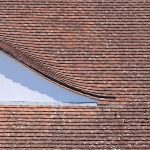
Ice damage can wreak havoc on a home, causing both exterior and interior damage that can be costly to repair. Understanding the causes and effects of ice damage is crucial in order to properly assess and repair any issues that may arise. Ice damage occurs when water freezes and expands, causing pressure on surfaces such as roofs, gutters, and siding. This pressure can lead to cracks, leaks, and even structural damage if left untreated. Additionally, ice dams can form on roofs, preventing proper drainage and leading to water seepage into the home. Understanding the potential for ice damage and its impact on a home is the first step in effectively addressing any issues that may arise.
Furthermore, it is important to recognize the signs of ice damage, such as water stains on ceilings or walls, warped or damaged siding, and icicles forming on the exterior of the home. These signs can indicate potential issues that need to be addressed in order to prevent further damage. By understanding the causes and effects of ice damage, homeowners can take proactive measures to prevent and repair any issues that may arise, ultimately protecting their investment and ensuring the safety and integrity of their home.
Assessing the Damage
Once ice damage has been identified, it is crucial to assess the extent of the damage in order to determine the best course of action for repairs. This assessment should include a thorough inspection of the exterior and interior of the home, looking for signs of water damage, structural issues, and any areas where ice may have caused damage. It is important to take note of any areas where water may be seeping into the home, as well as any visible signs of damage such as cracks or warping. Additionally, it is important to assess the condition of the roof, gutters, and siding in order to determine the best approach for repairs.
In addition to a visual inspection, it may be necessary to enlist the help of a professional contractor or inspector to thoroughly assess the extent of the damage. This can help to identify any underlying issues that may not be immediately visible, as well as provide recommendations for repairs and preventative measures. By thoroughly assessing the damage caused by ice, homeowners can make informed decisions about how to proceed with repairs and ensure that any issues are properly addressed.
Repairing the Exterior
Repairing the exterior of a home after ice damage can be a complex and labor-intensive process, but it is crucial in order to prevent further damage and protect the integrity of the home. One of the first steps in repairing the exterior is to address any issues with the roof, such as damaged shingles or flashing. This may require the help of a professional roofer in order to properly assess and repair any issues that may have been caused by ice damage. Additionally, it may be necessary to clear any ice dams from the roof in order to prevent further water seepage into the home.
In addition to addressing issues with the roof, it is important to inspect and repair any damaged gutters or downspouts. Ice damage can cause gutters to become warped or detached from the home, leading to improper drainage and potential water seepage. Repairing or replacing damaged gutters can help to prevent further issues and protect the exterior of the home from future ice damage. Finally, it may be necessary to repair or replace damaged siding or trim that has been affected by ice damage. This can help to restore the appearance and integrity of the home’s exterior, as well as prevent further issues from arising.
Repairing the Interior
Ice damage can also cause issues within the interior of a home, such as water seepage, mold growth, and damaged ceilings or walls. In order to properly repair the interior of a home after ice damage, it is important to address any areas where water may be seeping into the home. This may require repairing damaged ceilings or walls, as well as addressing any underlying issues that may be causing water seepage. Additionally, it may be necessary to address any mold growth that has occurred as a result of ice damage in order to ensure the safety and health of the home’s occupants.
In addition to addressing water seepage and mold growth, it may be necessary to repair or replace damaged insulation within the home. Ice damage can cause insulation to become wet or damaged, leading to decreased energy efficiency and potential issues with temperature regulation within the home. By properly repairing or replacing damaged insulation, homeowners can ensure that their home is properly insulated and protected from future ice damage. Finally, it may be necessary to address any cosmetic issues within the interior of the home, such as damaged paint or trim. By thoroughly repairing the interior of a home after ice damage, homeowners can restore the safety and comfort of their living space.
Preventing Future Ice Damage
After repairing any issues caused by ice damage, it is important for homeowners to take proactive measures in order to prevent future issues from arising. This may include installing gutter guards in order to prevent debris from clogging gutters and causing ice dams, as well as ensuring that downspouts are properly directed away from the home’s foundation. Additionally, it may be necessary to properly insulate and ventilate attics in order to prevent ice dams from forming on the roof. By taking these preventative measures, homeowners can protect their investment and ensure that their home is properly prepared for future winter weather.
Furthermore, it is important for homeowners to regularly inspect their home for signs of potential ice damage in order to address any issues before they escalate. This may include inspecting the roof for damaged shingles or flashing, as well as ensuring that gutters and downspouts are properly maintained and free from debris. By staying proactive and vigilant, homeowners can prevent future ice damage and protect their home from potential issues that may arise.
Revitalizing the Home
After addressing any issues caused by ice damage, homeowners may want to consider revitalizing their home in order to restore its appearance and functionality. This may include updating landscaping in order to improve drainage around the home, as well as making cosmetic updates such as painting or replacing damaged trim. Additionally, homeowners may want to consider making energy-efficient upgrades in order to improve the overall efficiency and comfort of their home. By revitalizing their home after ice damage, homeowners can restore its beauty and functionality while also protecting it from future issues.
In addition to making cosmetic updates, homeowners may want to consider making structural improvements in order to further protect their home from potential ice damage. This may include reinforcing the roof or adding additional insulation in order to improve its durability and energy efficiency. By making these improvements, homeowners can ensure that their home is properly prepared for future winter weather while also increasing its overall value and appeal.
Hiring Professional Help
While some repairs and preventative measures can be completed by homeowners themselves, it may be necessary to enlist the help of professional contractors or inspectors in order to properly address issues caused by ice damage. Professional help can provide valuable expertise and recommendations for repairs, as well as ensure that any underlying issues are properly addressed in order to prevent future damage. Additionally, professional help can save homeowners time and effort by completing repairs in a timely and efficient manner.
When hiring professional help for repairs or preventative measures, it is important for homeowners to thoroughly research and vet potential contractors or inspectors in order to ensure that they are qualified and reputable. This may include obtaining multiple quotes for repairs in order to compare pricing and services offered, as well as checking references and reviews from previous clients. By hiring professional help for repairs caused by ice damage, homeowners can ensure that their investment is properly protected and that their home is restored to its full potential.
In conclusion, understanding ice damage and its potential effects on a home is crucial in order to properly assess and repair any issues that may arise. By thoroughly assessing the extent of the damage caused by ice, homeowners can make informed decisions about how to proceed with repairs in order to protect their investment and ensure the safety and integrity of their home. Additionally, taking proactive measures to prevent future ice damage and revitalizing the home after repairs can further protect it from potential issues while also restoring its beauty and functionality. Finally, enlisting professional help for repairs caused by ice damage can provide valuable expertise and recommendations for repairs while also saving homeowners time and effort in completing necessary repairs. By taking these steps, homeowners can effectively address any issues caused by ice damage while also protecting their investment for years to come.



